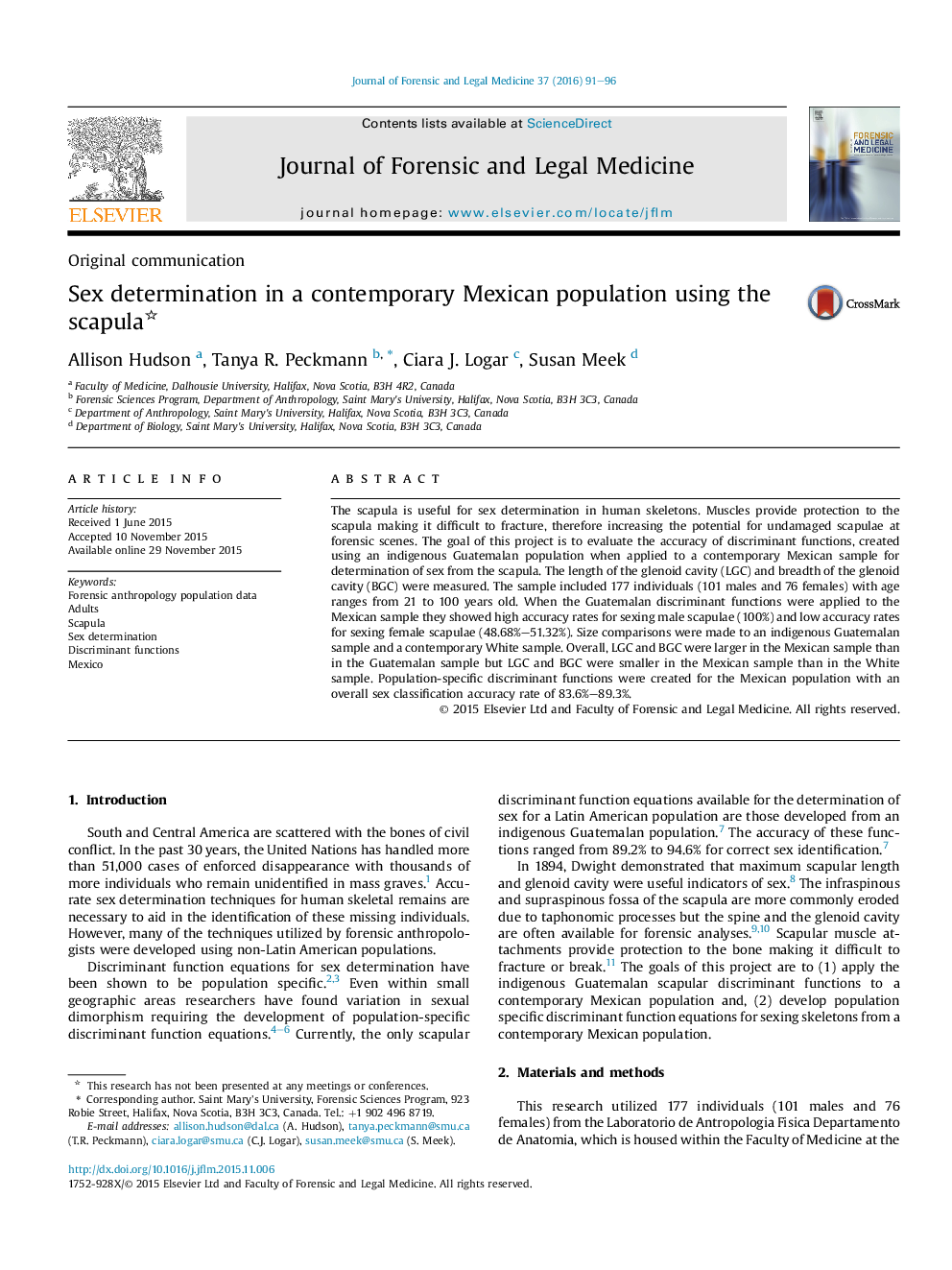| کد مقاله | کد نشریه | سال انتشار | مقاله انگلیسی | نسخه تمام متن |
|---|---|---|---|---|
| 101713 | 161289 | 2016 | 6 صفحه PDF | دانلود رایگان |
• The scapula is useful for sex determination in the modern Mexican population.
• Discriminant function score equations were generated for use in sex determination.
• Accuracy of sex classification ranged from 83.6% to 89.3%.
• Comparisons to other populations show sex determination ranges from 48.68% to 100%.
The scapula is useful for sex determination in human skeletons. Muscles provide protection to the scapula making it difficult to fracture, therefore increasing the potential for undamaged scapulae at forensic scenes. The goal of this project is to evaluate the accuracy of discriminant functions, created using an indigenous Guatemalan population when applied to a contemporary Mexican sample for determination of sex from the scapula. The length of the glenoid cavity (LGC) and breadth of the glenoid cavity (BGC) were measured. The sample included 177 individuals (101 males and 76 females) with age ranges from 21 to 100 years old. When the Guatemalan discriminant functions were applied to the Mexican sample they showed high accuracy rates for sexing male scapulae (100%) and low accuracy rates for sexing female scapulae (48.68%–51.32%). Size comparisons were made to an indigenous Guatemalan sample and a contemporary White sample. Overall, LGC and BGC were larger in the Mexican sample than in the Guatemalan sample but LGC and BGC were smaller in the Mexican sample than in the White sample. Population-specific discriminant functions were created for the Mexican population with an overall sex classification accuracy rate of 83.6%–89.3%.
Journal: Journal of Forensic and Legal Medicine - Volume 37, January 2016, Pages 91–96
